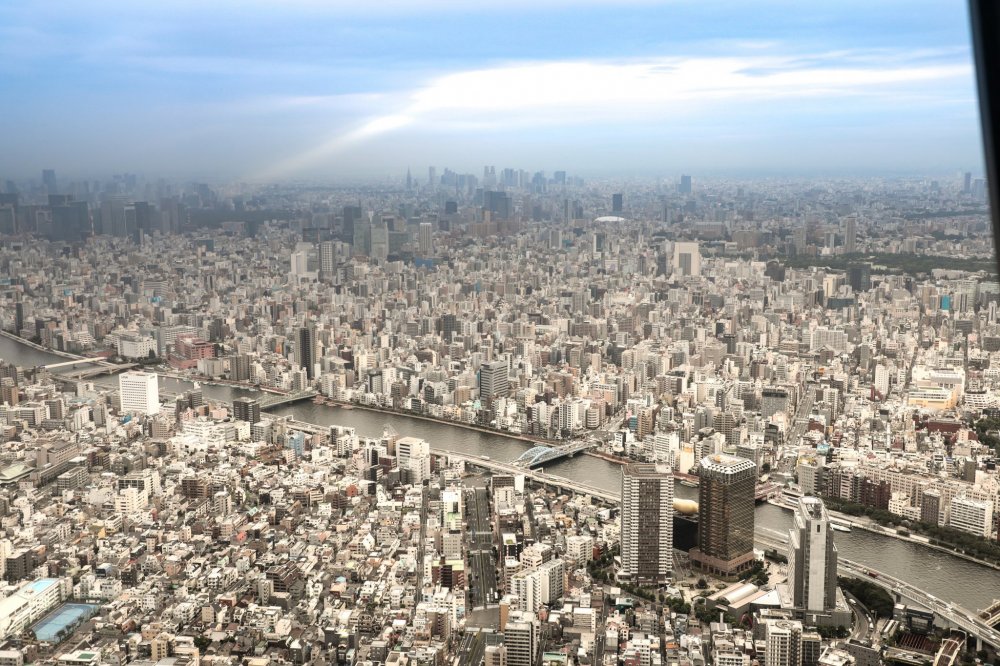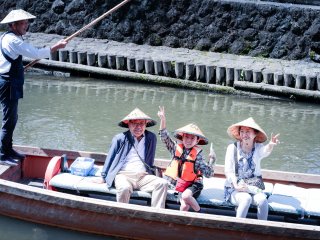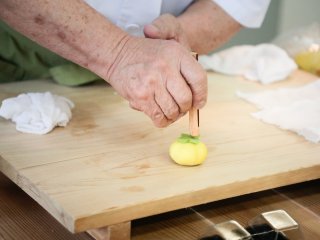I arrived early morning to Asakusa Station. I thought to myself, I never realized that Tobu Railways was more than a local line. In fact, they offer many places and attractions to go to. And for the first time, I was going on a Tobu Railways adventure.
My traveling companions and I took Tobu's direct line to our first destination, Tochigi. We arrived in Tochigi and traveled to Kuranomachi, a small Japanese town with many traditional buildings still remaining from the Edo period. As we walked along the historic Uzuma River, we waved to the friendly visitors on the traditional boat tours. We finished our walk with a trip to a small garden museum dedicated to the riverboat culture.

Next, we headed to Yamamoto Shoten, a sweets shop near the river. We entered the shop to see boards and cooking utensils for making wagashi, traditional Japanese sweets. As we learned to sculpt the clay-like sweet paste with the helpful and expert staff, we saw it quickly become beautiful pieces of delicious art! Many of the traditional wagashi is centered around the Japanese seasons. We made autumn-themed sweets, a green persimmon and Tsuki-no-Usagi, the mochi-making rabbit of the moon.
That evening we stayed at the Tobu Hotel in Utsunomiya. The hotel was well decorated, had an on-site restaurant, and staff met us with the excellent service that is to be expected from The Tobu Company. Each room was clean and modern, with views of Utsunomiya. It was a great place to relax and get a wonderful nights sleep.
Well-rested for the next day, we set out for Kanmangafuchi in Nikko. The walking trail led us to a long line of Jizo statues (the guardian of children and those who care for the deceased). It was a beautifully eerie experience to be in their presences. Along the walking trail, we also saw fisherman and other photographers out enjoying the sunny day.

Our next destination was a little coffee house, Nikko Coffee. Nikko-grown coffee was not the only thing they served, but also cafe-style lunches and sweets that complemented the coffee perfectly. The tasty meals and the chic atmosphere made it worth the journey to the cafe. I personally recommend any of the chiffon cake!
Next, we went to Kegon Falls. The view of the waterfall was unbelievable. Falling from a feet of 97 m, the flowing water hit the deep dark stones, mesmerizing visitors and photographers alike. There was more to do then just enjoy the waterfall. There were also cafes, sweet shops, and souvenir stores to visit. I could of stayed there all day.
We checked in that night to The Nikko Kanaya Hotel. The historic and delightfully vintage hotel is located within a beautiful forest setting. Perfect for nature and history lovers alike. The helpful staff showed us around the well-maintained hotel, telling us the story of the famous people who had visited there. After checking into our rooms, we went for dinner at the near by Mihashi Steak House. Everything we ate was delicious and I was excited to try Nikko’s famous maitake mushrooms. In the morning, I ventured out of my room and went to the dining area for breakfast. There was a beautiful Japanese style breakfast waiting for me. I enjoyed every bite while I sat in the morning sun.

The hotel was conveniently located just a short walk to our next destination, the UNESCO World Heritage Site Shrines and Temples of Nikko. In the Tosho-gu area, each temple was a work of art. All were lined with gold and decorated with the most intricate details. While photography is allowed in most places, I entered one temple where cameras were banned at the door. I sat through a short prayer and afterwards was able to walk through the temple and see the old artwork that was carefully being renovated. Nearby the temples was a museum, filled with articles and artifacts. Many translated in to multiple languages. The museum also played animated movies, relative to the temple and its history. Throughout the World Heritage Site, I was almost speechless to be in the presence of so much beauty in one place.
We returned to Tokyo, arriving at one of its most famous landmarks, Tokyo Skytree. This stunning piece of architecture provides a 360-degree view of Tokyo, safely from an observation area with amazing photo opportunities. Many of the helpful staff also speak other languages, so navigation and getting information was easy. However, it wasn't only the views I found remarkable. The maps, videos, and artwork are also interesting, informative, and charming. It matched the stylish aesthetics of the Skytree. Even the elevators were decorated with the four seasons as celebrated by the Japanese.
My journey with Tobu Railways was one to always remember. I recommend Tochigi, Utsunomiya, Nikko and Tokyo Skytree for first-time travelers to Japan, as well as locals who are looking to explore outside the city. Check out https://www.facebook.com/tobugroup.en/ for more information, photos, and updates on Tobu Railways and get ready to plan your next adventure! There is always more to see with Tobu Railways.





















































































